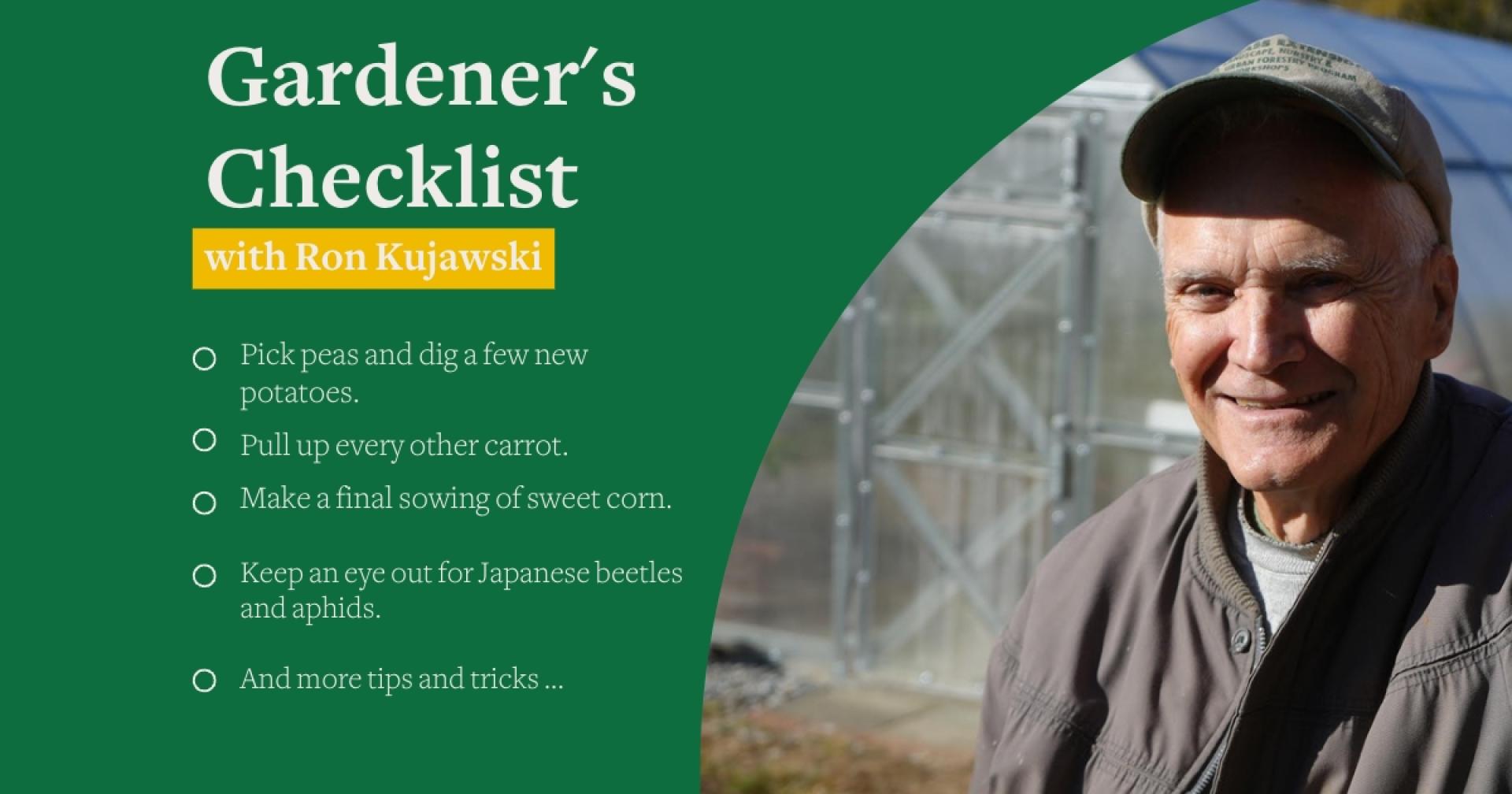You are here
Gardeners Checklist: Here Is What to Do In Late June and Early July
Gardeners Checklist: Here Is What to Do In Late June and Early July
By Ron Kujawski
• Pick peas and dig a few new potatoes to go with grilled salmon, a New England July Fourth tradition. Supposedly, John Adams celebrated Independence Day with such a meal. Turtle soup was also on John’s menu. I think we’ll go with mock turtle soup. By the way, how do you catch a mock turtle? I have so much to learn.
• Pull up every other carrot. Not only are you thinning the row of carrots, but you are also getting some fine baby carrots great for braising or steaming. Make another sowing of carrots now to keep them babies coming.
• Make a final sowing of sweet corn. Choose a variety that matures in about 65 to 75 days. Longer maturing varieties might not make it if there’s an early fall freeze. Other crops that can still be planted include bush beans and summer squash.
• Place exclusion netting, also called bird netting, over blueberry bushes and raspberries to keep our feathered friends from devouring the crop. Don’t wait until the fruit are fully ripe because birds will eat berries even if they are not quite ripe. Naughty birds.
• Keep an eye out for Japanese beetles. They’ll be appearing any day now. Early application of a botanical insecticide such as neem or natural pyrethrum will deter the beetles. The effect of these organic insecticides is short-lived, so repeat applications will be needed. Check the product label for specific instructions on application.
• Start pruning spring flowering shrubs such as rhododendrons, viburnums, lilacs, and mockorange if they are in need of pruning. If you wait too long to prune, you may be removing the buds for next year’s flowers. Even if not pruning, remove as many deadheads as you can from these shrubs.
It may be my eyesight, but I have not been finding as many pests in our landscape and gardens as yet. There is one exception to my low-bug observation: aphids. These tiny, soft-bodied, pear-shaped insects have infested many plants in our yard and gardens. Sometimes referred to as “plant lice,” though not related to lice, aphids have long, slender mouth parts that they use to pierce plant parts and suck out the sugary plant fluids. I’ve found the little suckers, I mean aphids, on leaves or stems of basil, beans, cabbage, parsley, dill, spinach, roses, viburnums, and many other plants. There are many species of aphid with colors varying from green to black to red to orange. They are most often found in great numbers on the undersides of leaves or along tender stems. They can kill annual plants, including vegetables, and distort and weaken herbaceous perennials and woody plants. As such, control measures are usually necessary. Insecticidal soap, pyrethrins, and neem oil are the safest materials to use. However, when I see numerous lady beetles on aphid-infested plants, I’ll leave the control up to them. They’re pretty good at it, and they work cheap.
Ron Kujawski began gardening at an early age on his family's onion farm in upstate New York. Although now retired, he spent most of his career teaching at the UMass Extension Service. He serves on Berkshire Botanical Garden’s Horticulture Advisory Committee. His book, Week-by-Week Vegetable Gardener’s Handbook, is available here.
Help Our Garden Grow!
Your donation helps us to educate and inspire visitors of all ages on the art and science of gardening and the preservation of our environment.
All donations are 100 percent tax deductible.



